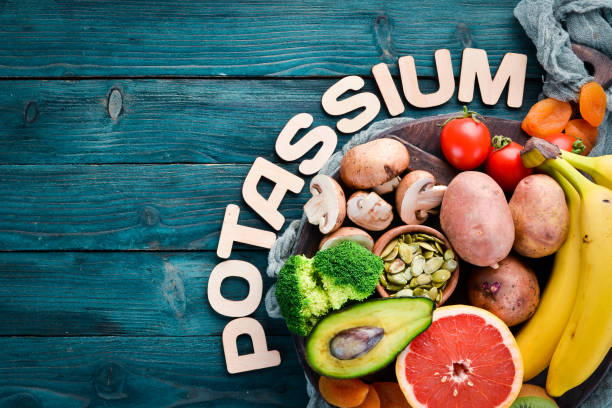What is a Low Potassium Diet?
A low potassium diet is a dietary plan designed to limit the intake of potassium, a mineral essential for heart, muscle, and nerve function. While potassium is vital for health, too much can be dangerous—especially for people with kidney disease, as their kidneys cannot properly remove excess potassium from the blood.
Elevated potassium levels (hyperkalemia) can lead to irregular heart rhythms, muscle weakness, or even heart failure in severe cases. A low potassium diet helps maintain safe potassium levels in the body.
Who Needs a Low Potassium Diet?
You may need a low potassium diet if you have:
- Chronic Kidney Disease (CKD)
- End-stage renal disease (ESRD)
- Are undergoing dialysis
- Have adrenal disorders
- Take medications that increase potassium (e.g., ACE inhibitors, potassium-sparing diuretics)
Potassium: How Much is Too Much?
- Recommended intake (general public): ~2,500–3,400 mg/day
- Low potassium diet limit: Often 1,500–2,000 mg/day, as advised by a doctor or dietitian
Foods to Eat on a Low Potassium Diet:
Choose low-potassium foods that contain less than 200 mg per serving.
Low-Potassium Fruits:
- Apples
- Berries (strawberries, blueberries)
- Grapes
- Pineapple
- Watermelon
- Peaches (canned)
Low-Potassium Vegetables:
- Cabbage
- Carrots (cooked)
- Green beans
- Cauliflower
- Lettuce
- Onions
- Bell peppers
Other Safe Options:
- White rice, pasta
- White bread
- Unsalted popcorn
- Rice milk (non-fortified)
- Eggs
- Chicken (in moderation)
Foods to Avoid on a Low Potassium Diet:
Avoid foods that are high in potassium (over 200 mg per serving).
High-Potassium Fruits:
- Bananas
- Oranges & orange juice
- Avocados
- Mangoes
- Kiwis
- Cantaloupe
- Dried fruits (raisins, prunes, dates)
High-Potassium Vegetables:
- Potatoes (white and sweet)
- Tomatoes and tomato products
- Spinach (cooked)
- Pumpkin
- Beans and lentils
- Broccoli (cooked)
Other High-Potassium Foods:
- Nuts and seeds
- Chocolate
- Dairy (milk, yogurt)
- Salt substitutes (often contain potassium chloride)
- Coconut water
Low Potassium Diet Chart:
| Meal | Food Items | |
|---|---|---|
| Morning (7:30 AM) | Breakfast: – 1 slice white toast with unsalted butter – 1 boiled egg – 1 small apple – Herbal tea (no milk) | |
| Mid-Morning Snack (10:00 AM) | – 1/2 cup rice cereal (unsweetened) – 1/2 cup rice milk (unfortified) | |
| Lunch (1:00 PM) | – Grilled chicken breast (2 oz) – 1/2 cup white rice – 1/2 cup boiled green beans – 1 small dinner roll – 1/2 cup canned peaches (drained) – Water | |
| Evening Snack (4:00 PM) | – 1/2 cup unsalted popcorn – 1 small handful of unsalted rice crackers | |
| Dinner (7:00 PM) | – Baked white fish (e.g., cod, 3 oz) – 1/2 cup boiled carrots – 1/2 cup boiled cabbage – 1/2 cup white pasta with olive oil & garlic – Water | |
| Bedtime Snack (9:00 PM) | – 1 small apple or a few grapes – Herbal tea or water |
Helpful Tips for a Low Potassium Diet:
- Boil vegetables and discard the water to reduce potassium content.
- Read food labels for potassium content (especially in packaged foods).
- Avoid salt substitutes unless approved by your doctor.
- Stick to recommended portion sizes — even low-potassium foods can add up.
- Plan meals with the help of a dietitian to ensure nutritional balance.
Final Thoughts:
A low potassium diet is essential for people who need to limit potassium levels due to kidney or heart conditions. With careful planning and food choices, you can maintain safe potassium levels and reduce the risk of complications like heart problems and muscle weakness.
